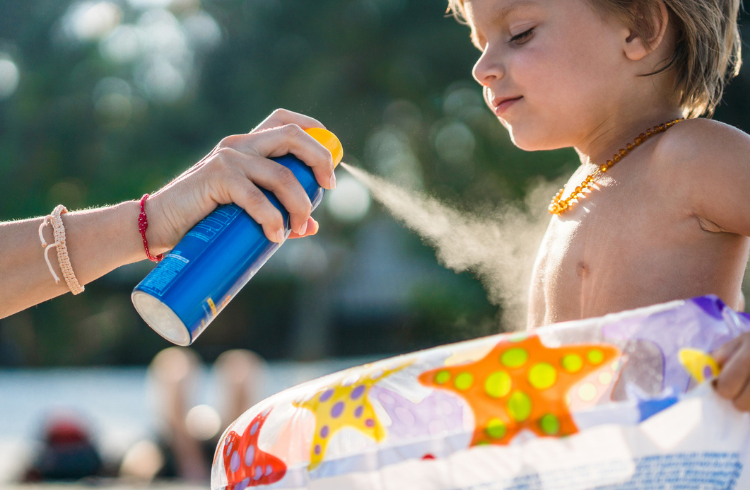Cosmetic Fragrance and Flavor Ingredient Right to Know Act
At a Glance
The Cosmetic Fragrance and Flavor Ingredient Right to Know Act (Rep. Schakowsky (D-IL) & Rep. Matsui (D-CA)) will likely be re-introduced and assigned a new bill number in the 118th congress in mid-May 2025.
This bill would require the disclosure of the secret, unlabeled, and often toxic fragrance and flavor chemicals in our personal care products on product labels and websites. The bill would apply to both retail consumer products and professional salon products.
This bill is part of the Safer Beauty Bill Package, four bills to make beauty and personal care products safer for all by getting the toxic chemicals out, reducing hazardous chemical exposures for the most vulnerable, making fragrance disclosure the new industry standard and requiring supply chain transparency.

Summary
The Cosmetic Fragrance and Flavor Ingredient Right to Know Act would require companies selling beauty or personal care products to publicly disclose the presence of all fragrance and flavor ingredients on product labels and company websites.
Background
Thousands of synthetic chemicals are used to create the fragrances and flavors that comprise the beauty and personal care products we use every day. Some of these chemicals have been linked to negative health impacts ranging from allergic reactions to reproductive harm to increased risk of breast cancer.
The magnitude of the potential danger to human health is worsened by the fact that fragrance chemicals are found in more than 95%of personal care products[i] such as shampoos, conditioners, hair styling products, antiperspirants and shaving products, as well as fine fragrances, body sprays, and lotions. In a national survey, over 34% of respondents in the U.S. reported health problems, such as migraine headaches and respiratory difficulties, in response to exposure to fragranced products.[ii]
Recent data compiled by Women’s Voices for the Earth reveals that a third of all fragrance chemicals currently in use have been flagged as potentially toxic by scientists around the world.[iii] Additionally, personal care product testing conducted by Breast Cancer Prevention Partners in 2018 revealed that three out of four hazardous chemicals identified in the products tested were fragrance ingredients.[iv]
Fragrance chemicals also pose significant occupational risks. Professional salon workers are disproportionately exposed to fragrances in the workplace. Hairdressers and beauticians have a 47-fold higher risk[v] of fragrance skin allergies than people in other occupations. The California Work-Related Asthma Prevention Program has documented that the use of fragranced products in the workplace is associated with work-related asthma.[vi]
Chemicals intended to impart flavor can also have harmful health impacts. Thirty-eight flavors listed on the International Organization of the Flavorings Industry (IOFI) list are on the California Department of Toxic Substances Control’s Candidate Chemicals List linking them to human health or environmental harm.[vii]
This includes ten flavor ingredients listed as carcinogens or reproductive toxicants by California Proposition 65.[viii]
Current market trends and state laws
The disclosure of hazardous fragrance and flavor ingredients in personal care and beauty products is already happening nationwide. Multinational giants like Proctor & Gamble, Unilever, and Johnson & Johnson voluntarily disclose fragrance ingredients at or above 100 parts per million, and hundreds of clean cosmetic companies fully disclose fragrance ingredients.
An industry best practice, the disclosure of harmful fragrance and flavor ingredients in beauty and personal care is also the law in California,[ix] and two states – California[x] and New York[xi] – require even stronger fragrance ingredient disclosure for cleaning products. Furthermore, the fragrance and flavor ingredients publicly disclosed via the California Cosmetic Fragrance and Flavor Ingredient Right to Know Act of 2020[xii] are no longer eligible for trade secret protection. This is because once they are public in California, they are no longer a secret.
Problem
No federal law currently requires the disclosure of fragrance or flavor ingredients to consumers or regulatory agencies. This loophole allows dozens – sometimes even hundreds – of chemicals to hide under the word “fragrance” on the labels of beauty and personal care products with no regulatory oversight of the safety of those ingredients. The same loophole exists for flavors, which frequently appear in products like flavored lip gloss and chap-sticks marketed to children.
Anyone using personal care or beauty products is at risk of being exposed to secret hazardous fragrance and flavor chemicals and related harmful chronic health concerns, particularly vulnerable populations such as babies, children, communities of color, professional salon workers, and pregnant women.
The presence of unknown, unlabeled toxicants is cause for serious concern because scientific evidence suggests that hazardous chemical exposures in our everyday lives harm human and environmental health.
Solution
The Cosmetic Fragrance and Flavor Ingredient Right to Know Act requires:
- On-pack and website disclosure of fragrance or flavor chemicals in a beauty or personal care product.
- On-pack disclosure of EU 26 fragrance allergens (plus any updates to this regulation).
For more information, contact:
Janet Nudelman, Breast Cancer Prevention Partners, Janet@BCPP.org
[i] Prevalence of Cosmetic Allergens; Journal of Clinical and Aesthetic Dermatology
[ii] Fragranced consumer products: exposures and effects from emissions; Air Quality, Atmosphere & Health International Journal
[iii] Unpacking the Fragrance Industry
[iv] Right to Know: Exposing toxic fragrance chemicals in beauty, personal care and cleaning products
[v] Montgomery RL, Agius R, Wilkinson SM and Carder M. (2018) UK trends of allergic occupational skin disease attributed to fragrances
[vi] CDPH Fragrances and Work-Related Asthma
[vii] Women’s Voices for the Earth – comparison of SB312 reportable ingredients to IOFI flavor palette (2019)
[viii] Women’s Voices for the Earth – comparison of SB312 reportable ingredients to IOFI flavor palette (2019)
[ix] Bill Text – SB-312 Cosmetic Fragrance and Flavor Ingredient Right to Know Act of 2020. (ca.gov)
[x] Bill Text – SB-258 Cleaning Product Right to Know Act of 2017. (ca.gov)
[xi] Household Cleansing Product Information Disclosure Program – NYS Dept. of Environmental Conservation
Types: Fact Sheet





